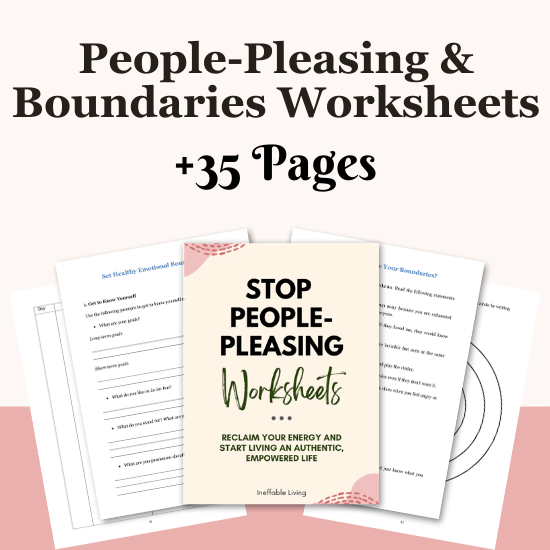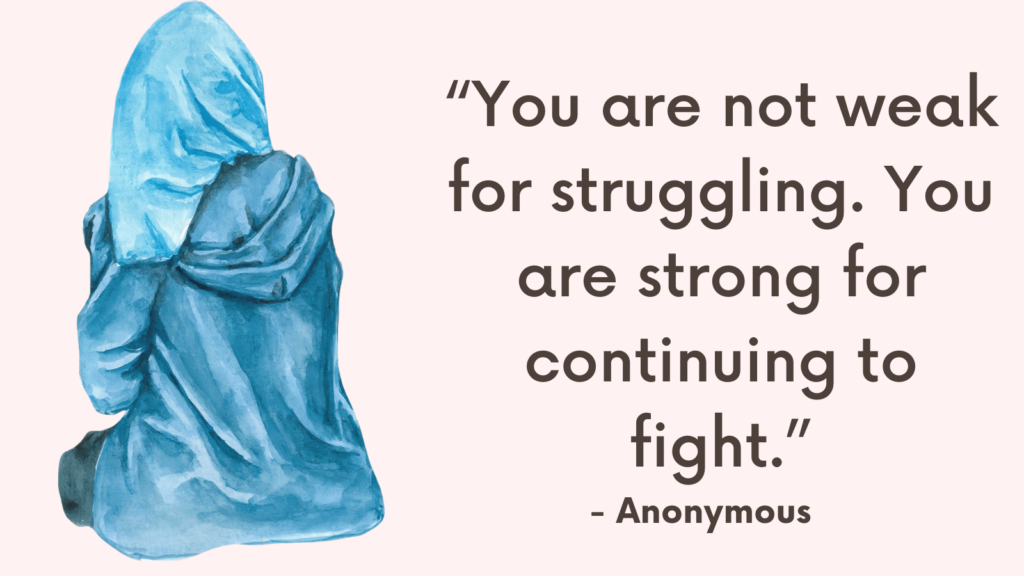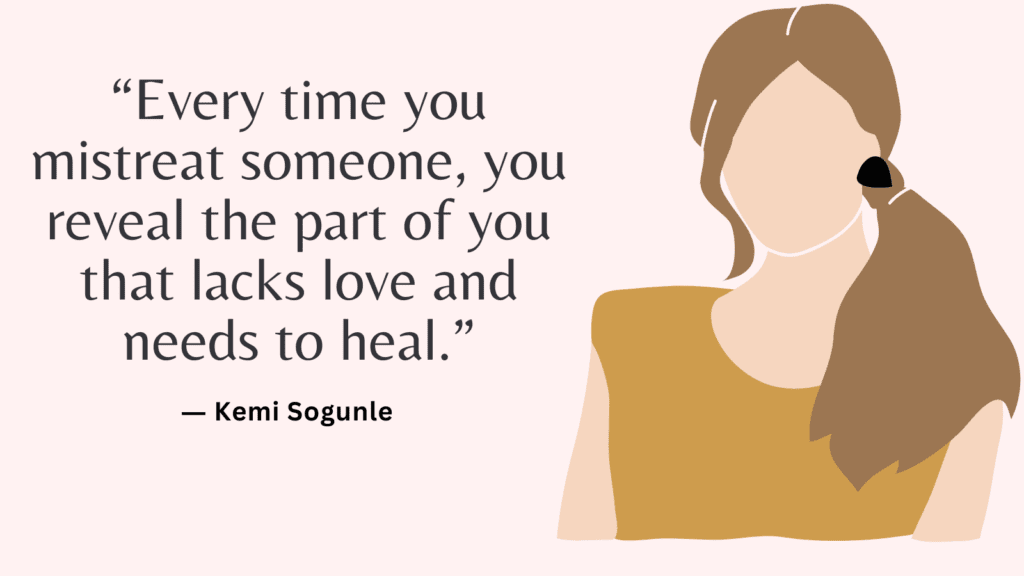This post contains the top 10 signs you have rigid boundaries as well as helpful tips to set healthy boundaries
What Are Boundaries?
Boundaries are essential guidelines and limits that help define how individuals interact with each other, set expectations, and protect their emotional and physical well-being.
They are crucial for maintaining healthy relationships and promoting self-respect. Boundaries can manifest in various forms, including personal space, time management, emotional expression, and communication styles.
Emotional boundaries: These boundaries involve the ability to separate one’s emotions and responsibilities from those of others. Healthy emotional boundaries enable individuals to empathize with others while maintaining a distinction between their own feelings and those of others.
Physical boundaries: Physical boundaries refer to the physical space and touch that individuals are comfortable with in different relationships. It includes personal space and the acceptance or refusal of physical contact.
Time boundaries: Time boundaries involve setting aside time for oneself and managing commitments to avoid feeling overwhelmed or overextended. This could include the ability to say no to additional responsibilities when necessary.
Material boundaries: Material boundaries involve setting limits on what resources, such as money or belongings, individuals are comfortable sharing or lending to others.
Communication boundaries: Communication boundaries encompass the way individuals express their thoughts, feelings, and needs to others. This includes being assertive, expressing preferences, and setting limits on acceptable forms of communication.
Related: Top 25 Tips On How To Set Boundaries Without Being Controlling? (+FREE Worksheets PDF)
Weak, Rigid, and Healthy Boundaries
1. Weak Boundaries:
Weak boundaries often manifest as an inability to assert one’s own needs, limits, and values. Individuals with weak boundaries may have difficulty saying no, even when it is in their best interest to do so.
This can lead to feelings of being taken advantage of, overwhelmed, or lacking autonomy.
People with weak boundaries might find themselves overly accommodating to others, often at the expense of their own well-being.
2. Rigid Boundaries:
Rigid boundaries are characterized by an excessive adherence to personal limits without flexibility.
Individuals with rigid boundaries may have a strong aversion to intimacy, struggle to ask for help, and tend to keep others at a distance.
This can lead to isolation, strained relationships, and challenges in adapting to new situations.
Rigid boundaries can also manifest as an unwillingness to compromise or accommodate the needs of others.
3. Healthy Boundaries:
Healthy boundaries involve a balanced approach to setting and respecting personal limits while also recognizing and honoring the boundaries of others.
Individuals with healthy boundaries can assert their needs and limits with clarity and confidence while remaining receptive to the needs of others.
Healthy boundaries foster self-respect, autonomy, and mutually fulfilling relationships.
It’s important to note that boundary styles can vary across different relationships and contexts.
Finding a balance between being able to assert oneself while also respecting the boundaries of others is essential for emotional well-being and healthy interpersonal connections.
Related: Top 19 Journal Prompts For Boundaries
Top 10 Signs You Have Rigid Boundaries
1. Avoidance of Intimacy
People with rigid boundaries often struggle with intimacy, whether it’s emotional or physical.
They may feel uncomfortable with closeness and tend to keep others at a distance.
2. Difficulty Asking for Help
Individuals with rigid boundaries may find it challenging to ask for help or support from others.
They may feel like they have to handle everything on their own, even when it becomes overwhelming.
3. Fear of Rejection
Rigid boundaries can stem from a deep-seated fear of rejection.
This fear may lead individuals to avoid situations where they might feel vulnerable or exposed.
4. Emotional Detachment
Those with rigid boundaries may appear emotionally detached or distant in their interactions with others.
They may struggle to express their feelings openly and may come across as aloof or unapproachable.
Related: 7 Types of Boundaries (+FREE Worksheets)
5. Perfectionism
Rigid boundaries can be associated with perfectionistic tendencies.
Individuals may set impossibly high standards for themselves and others, leading to a lack of flexibility and understanding.
6. Difficulty Compromising
People with rigid boundaries may struggle to compromise in their relationships.
They may have a “my way or the highway” approach, making it challenging to find common ground with others.
7. Overly Structured Lifestyle
Rigid boundaries can manifest in an overly structured and controlled lifestyle.
Individuals may resist spontaneity and prefer strict routines and predictability.
Related: Healthy Boundaries Quiz (+Free PDF Worksheets)
8. Limited Emotional Expression
Those with rigid boundaries may have difficulty expressing their emotions authentically.
They may suppress their feelings or only feel comfortable expressing certain emotions while avoiding others.
9. Strained Relationships
Rigid boundaries can create strain in relationships, as others may feel shut out or disconnected from the individual.
This can lead to feelings of isolation and loneliness.
10. Difficulty Setting Limits
While it may seem paradoxical, individuals with rigid boundaries may struggle to set appropriate limits with others.
They may oscillate between being excessively rigid or overly permissive, finding it challenging to strike a healthy balance.
Related: Boundaries vs Ultimatum
How to Set Health Boundaries?
Here are some strategies to help you transition away from rigid boundaries:
1. Self-Reflection
Take time to reflect on the origins of your rigid boundaries.
Consider past experiences or beliefs that may have led to the development of inflexible limits.
2. Identify Areas of Rigidity
Recognize specific areas in your life where rigid boundaries are most prominent.
This may include emotional expression, decision-making, personal space, or communication.
3. Explore the Root Causes
Delve into the underlying reasons for your rigid boundaries.
Are they rooted in fear, past trauma, perfectionism, or a need for control?
4. Practice Mindfulness
Engage in mindfulness activities to increase self-awareness and observe your thoughts and behaviors without judgment.
This can help you recognize when rigid boundaries are at play.
Related: What Do Boundaries Sound Like? + 35 Boundaries Examples
5. Challenge Negative Beliefs
Identify and challenge any negative beliefs that contribute to rigid boundary-setting.
Replace these beliefs with more adaptive and flexible thoughts.
6. Gradual Exposure
Gradually expose yourself to situations that require flexibility in your boundaries.
Start with small steps and gradually increase the level of flexibility over time.
7. Seek Perspective
Engage in open conversations with trusted individuals to gain different perspectives on your boundaries.
This might offer insights that can help you reevaluate and adjust your limits.
8. Embrace Vulnerability
Practice being vulnerable in safe and supportive relationships.
This can help you become more comfortable with flexible boundaries and open communication.
9. Set Realistic Expectations
Understand that it’s okay to not always have everything figured out or under control.
Embrace the idea that flexibility can lead to growth and positive change.
Related: +100 Examples of Boundary Violations & How to Deal With It

Conclusion
Moving away from rigid boundaries is a process that requires patience, self-compassion, and a willingness to challenge existing beliefs and behaviors.
By incorporating these strategies into your daily life and seeking support when needed, you can begin to transition towards a more flexible and adaptive approach to setting boundaries.



